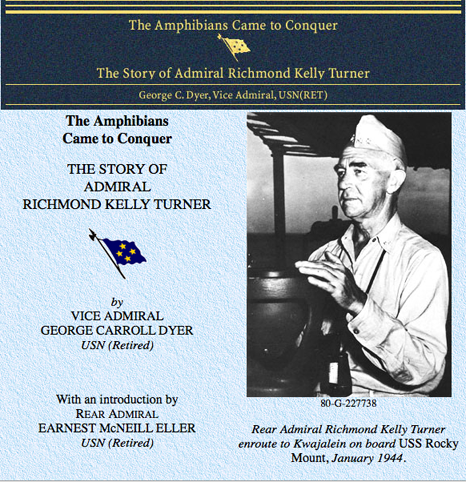
Admiral Richmond K. Turner
Overview
Admiral Richmond Kelly Turner (May 27, 1885 – February 12, 1961), commonly known as Admiral Kelly Turner, served in the United States Navy during World War II, and is best known for commanding the Amphibious Force during the campaign across the Pacific.
Richmond Kelly Turner was born in Portland, Oregon, on 27 May 1885. Appointed to the U.S. Naval Academy from California in 1904, he graduated in June 1908 and served in several ships over the next four years. In 1913, Lieutenant (Junior Grade) Turner briefly held command of the destroyer Stewart. After receiving instruction in ordnance engineering and service on board the gunboat Marietta, he was assigned to the battleships Pennsylvania, Michigan and Mississippi during 1916-19.
From 1919 to 1922, Lieutenant Commander Turner was an Ordnance Officer at the Naval Gun Factory in Washington, D.C.. He then was Gunnery Officer of the battleship California, Fleet Gunnery Officer on the Staff of Commander Scouting Fleet and Commanding Officer of the destroyer Mervine. Following promotion to the rank of Commander in 1925, Turner served with the Bureau of Ordnance at the Navy Department. In 1927, he received flight training at Pensacola, Florida, and a year later became Commanding Officer of the seaplane tender Jason and Commander Aircraft Squadrons, Asiatic Fleet. He had further aviation-related assignments into the 1930s and was Executive Officer of the aircraft carrier Saratoga in 1933-34. Captain Turner attended the Naval War College and served on that institution's staff in 1935-38. He next commanded the heavy cruiser Astoria and took her on a diplomatic mission to Japan in 1939.
Captain Turner was Director of the War Plans Division in Washington, D.C., in 1940-41 and achieved the rank of Rear Admiral late in the latter year. He was Assistant Chief of Staff to the Commander in Chief, U.S. Fleet from December 1941 until June 1942 and was then sent to the Pacific war zone to take command of the Amphibious Force, South Pacific Force. Over the next three years, while holding a variety of senior Pacific Fleet amphibious force commands as both a Rear Admiral and Vice Admiral, he planned and executed the conquest of enemy positions in the south, central and western Pacific, contributing greatly to ultimate victory in the World's greatest naval war. In the rank of Admiral, he would have commanded the amphibious component of the invasion of Japan, had that nation not capitulated in mid-1945.
Following the end of World War II, Admiral Turner served on the Navy Department's General Board and was U.S. Naval Representative on the United Nations Military Staff Committee. He retired from active duty in July 1947.
Pearl Harbor
As Director of War Plans in Naval Operations, Captain Turner became the Naval Member of the Joint Planning Committee of the Joint Board. Turner and Colonel McNarney Air Corps, US Army wrote "Study of the Immediate Problems concerning Involvement in War" in late December 1940. This led to Plan D, a strong offensive war in the Atlantic and a defensive war in the Pacific. This evolved into US war plan "Rainbow Five".
On 25 November 1941, Turner drafted a despatch to the Commander in Chief of the Asiatic Fleet for release by the CNO, which contained the words: "I consider it probable that this next Japanese aggression may cause an outbreak of hostilities between the U.S. and Japan." Admiral Stark took this message to the President—who changed the releasor to himself—and softened the judgment words "probable" to "possible" and "may" to "might," and he added the bad guess: "Advance against Thailand seems the most probable."
Kimmel and the Pacific Fleet were highly aware of the threat of surprise Japanese attack at Pearl Harbor. The final and most important warning was sent from Washington and to other Pacific outposts on 27 November 1941. It was specifically designated as a "war warning."
Turner made the decision not to send the Commander of the U.S. Pacific Fleet, Admiral Husband E. Kimmel, details of the intercepted Japanese diplomatic communications which pointed strongly to an imminent air or sea attack on the Pacific Fleet's base at Pearl Harbor. Kimmel testified after the war that had he known of these communications, he would have maintained a much higher level of alert and that the fleet would not have been taken by surprise by the Japanese attack. A historian of the attack on Pearl Harbor, Professor Gordon Prange, wrote in Pearl Harbor: The Verdict of History that, even allowing for Kimmel's desire to exculpate himself, this was correct. Prange wrote: "If Turner thought a Japanese raid on Hawaii... to be a 50-percent chance, it was his clear duty to say so plainly in his directive to Kimmel... He won the battle for dominance of War Plans over Intelligence, and had to abide by the consequences. If his estimates had enabled the U.S. to fend off... the Japanese threat at Pearl Harbor, Turner would deserve the appreciation of a grateful nation. By the same token, he could not justly avoid his share of the blame for failure."
Admiral Turner testified to the Roberts Commission on 19 January 1942, the Admiral Thomas C. Hart Inquiry on the 3rd and 4 April 1944, the Navy Court of Inquiry headed by Admiral Orin G. Murfin on 15 September 1944 and the Joint Congressional Committee Investigating Pearl Harbor in 1946. None of these committees found fault in any of Admiral Turner's actions.
World War II
In December 1941, Turner was appointed assistant chief of staff to the Commander in Chief, United States Fleet (a new position created after Pearl Harbor for Admiral Ernest King), serving until June 1942. He was then sent to the Pacific to take command of the Amphibious Force, South Pacific Force. Over the next three years, he held a variety of senior Amphibious Force commands as a rear admiral and vice admiral. He helped plan and execute amphibious operations against enemy positions in the south, central and western Pacific. He would have commanded the amphibious component of the invasion of Japan.
For the Battle of Guadacanal, Rear Admiral Turner was Commander, Amphibious Force South Pacific, also known as Task Force 62 which included 9 Groups, including Landing Force, Maj. Gen. Vandegrift and Screening Group, Rear Admiral Crutchley, RN. He successfully fought the five-month campaign to victory which included the galling defeat at Savo Island when Admiral Jack Fletcher withdrew his aircraft carriers, exposing the landing force to a Japanese night attack.
For the assault on the Russell Islands, Rear Admiral Turner, COMPHIBSOPAC, was named as the Commander of the Joint Force designated Task Force 61, with the Commanding General 43rd Division, Major General John H. Hester, U.S. Army, being the Commander Landing Force. For the assault on the New Georgia Groups of Islands, Rear Admiral Turner, COMPHIBSOPAC, was named as the Commander Task Force 31 which included New Georgia Occupation Force, Maj. Gen. Hester.
For the assault on Tarawa and Makin, Rear Admiral Turner was named as the Commander, Assault Force Task Force 51, which included 10 Groups, including Northern Attack Force for Makin and Southern Attack Force for Tarawa, Rear Admiral Hill.
At Tarawa: "Rear Admiral Turner, the Task Force Commander and Immediate Senior in Command, was well over the horizon and busy with the problems of Makin. Vice Admiral Spruance, the Commander Central Pacific Force, was present at Tarawa in the Indianapolis (CA-35), but with that quality which endeared him to all his subordinates, did not undertake to kibitz on the minute-by-minute performance of the local Task Force or Task Group Commanders. To Rear Admiral Harry Hill belongs full credit for a great and hard-fought victory at Tarawa."
For the assault on the Marshall Islands Roi-Namur and Kwajalein, Rear Admiral Turner was the Commander, Joint Expeditionary Force, Task Force 51, which included 3 Task Forces and 9 Task Groups.
As a result of his leadership in these many amphibious assaults, Turner was promoted to Vice Admiral on March 7, 1944.
For the assaults on Tinian, Guam and Saipan, Vice Admiral Turner was the Commander, Joint Expeditionary Force, Task Force 51, which included the Northern and Southern Task Forces, Expeditionary Task Force, Lt Gen Smith and 6 Task Groups.
For the assault on Iwo Jima, Vice Admiral Turner was the Commander, Joint Expeditionary Force, Task Force 50, which included the Attack Force, Rear Admiral Hill, and Expeditionary Task Force, Lt Gen Smith.
At the Battle of Okinawa Turner commanded Task Force 51 which included the Northern Attack Force, Rear Admiral Reifsnider, the Southern Attack Force, Rear Admiral Hall, Expeditionary Troops, Lt. Gen. Buckner, Western Island Attack Group, Rear Admiral Kiland, Amphibious Support Force Rear Admiral Blandy and Gunfire and Covering Force, Rear Admiral Deyo. At the end of the Battle of Okinawa the Amphibious Forces under Admiral Turner's command were manned by 657,000 officers and men.
On May 24, 1945 Richmond Kelly Turner was promoted to full Admiral.
He would have commanded the amphibious component of the invasion of Japan. Amphibiously, under Admiral Turner's command, there were to be 2,700 ships and craft in the Kyushu operation. There had been 1,213 ships and craft under his command for the Okinawa operation, 435 for the Marianas operation and 51 at Guadalcanal.
Postwar
After World War II, Admiral Turner served on the Navy Department's General Board and was U.S. Naval Representative on the United Nations Military Staff Committee. He retired from active duty in July 1947. Admiral Turner died in Monterey, California, on February 12, 1961. He is buried in Golden Gate National Cemetery in San Bruno, California, alongside his wife and Admirals Chester Nimitz, Raymond A. Spruance, and Charles A. Lockwood, an arrangement made by all of them while living.
Source: Wikipedia
Kelly Turner
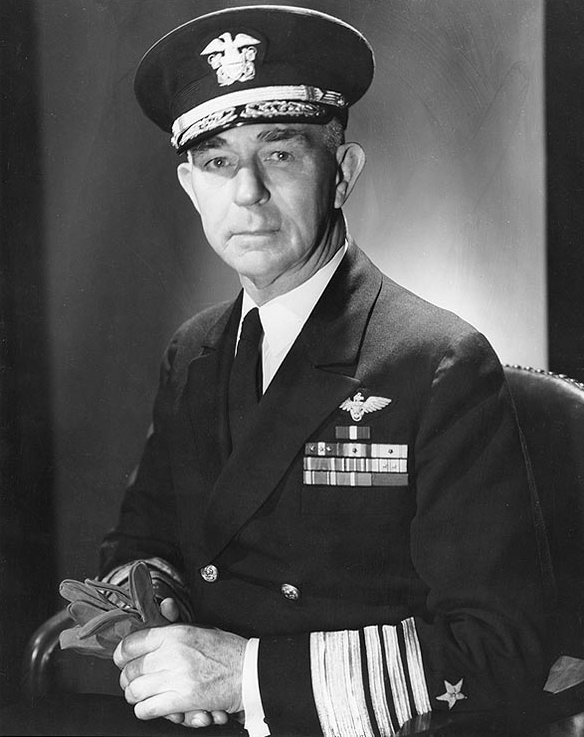
Portrait of Admiral Richmond K. Turner
Click on any photo to zoom
Biography
Birth Name:
Nick-name:
Born:
Died:
Buried:
Service Branch:
Years of Service:
Rank:
Com-mands:
Battles/ Wars:
Richmond Kelly Turner
Fighting Admiral
May 27, 1885
Portland, Oregon
February 12, 1961 (aged 75)
Monterey, California
Golden Gate National Cemetery
San Bruno, California
United States Navy
1904-1947
Fleet Admiral
USS Mervine (DD-322)
USS Jason (AC-12)
Commander Aircraft Squadrons, Asiatic Fleet
USS Saratoga (CV-3)
USS Astoria (CA-34)
Director of the War Plans Division
Assistant Chief of Staff to the Commander in Chief
Commander, Fifth Amphibious Force
Commander Amphibious Forces, U.S. Pacific Fleet (ComPhibPac)
World War II
• Guadalcanal Campaign
• Battle of Savo Island
• Solomon Islands campaign
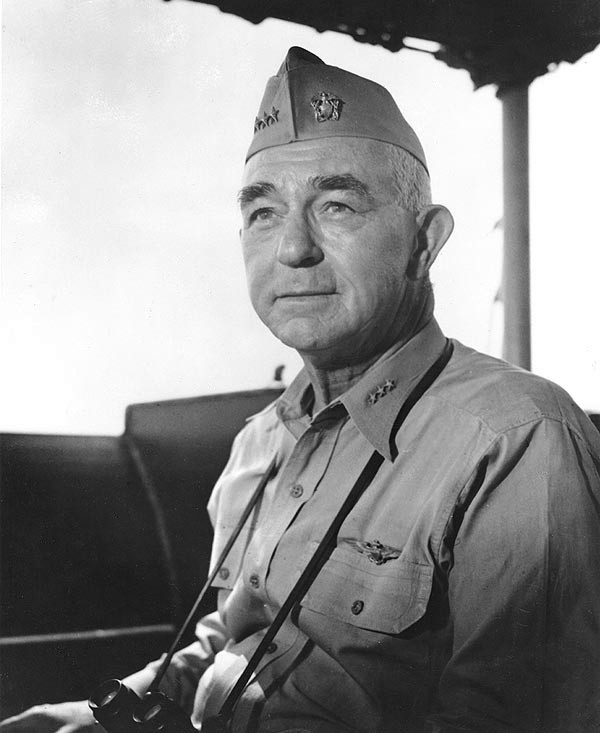
Admiral Richmond Kelly Turner on board his flagship, USS Eldorado (AGC-11), at the time of the Ryukyus operation, March 1945.
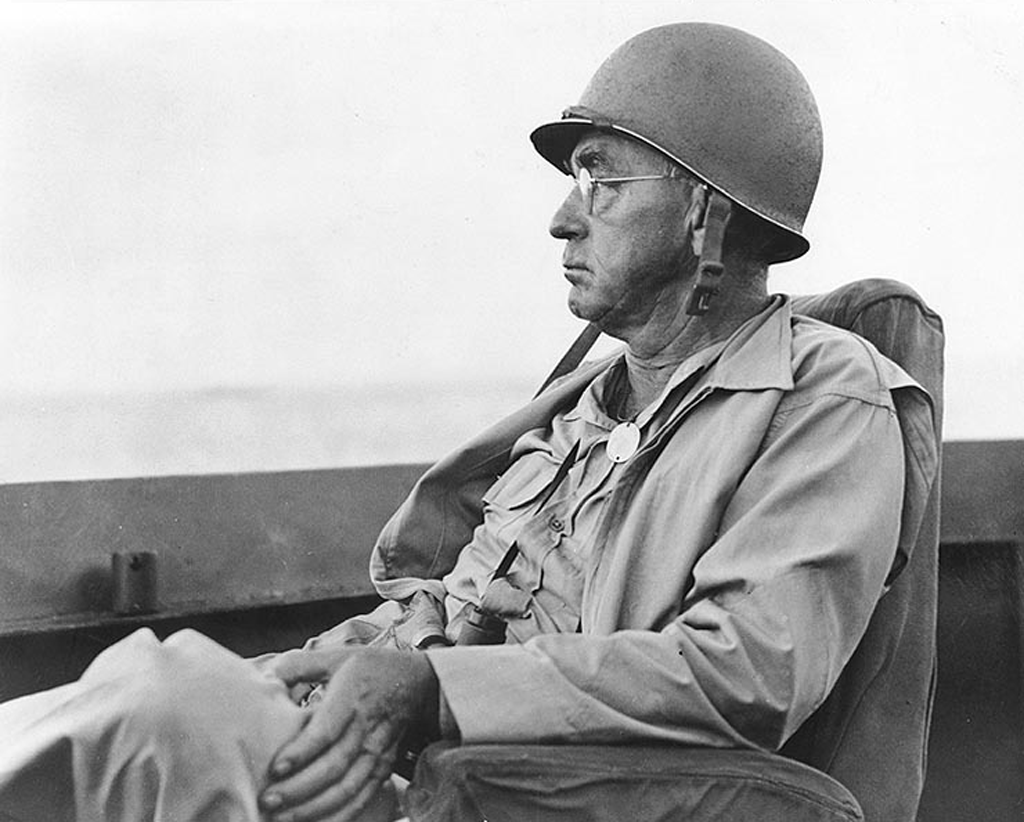
Vice Admiral Turner on board USS Rocky Mount (AGC-3) off Saipan, 17 June 1944.
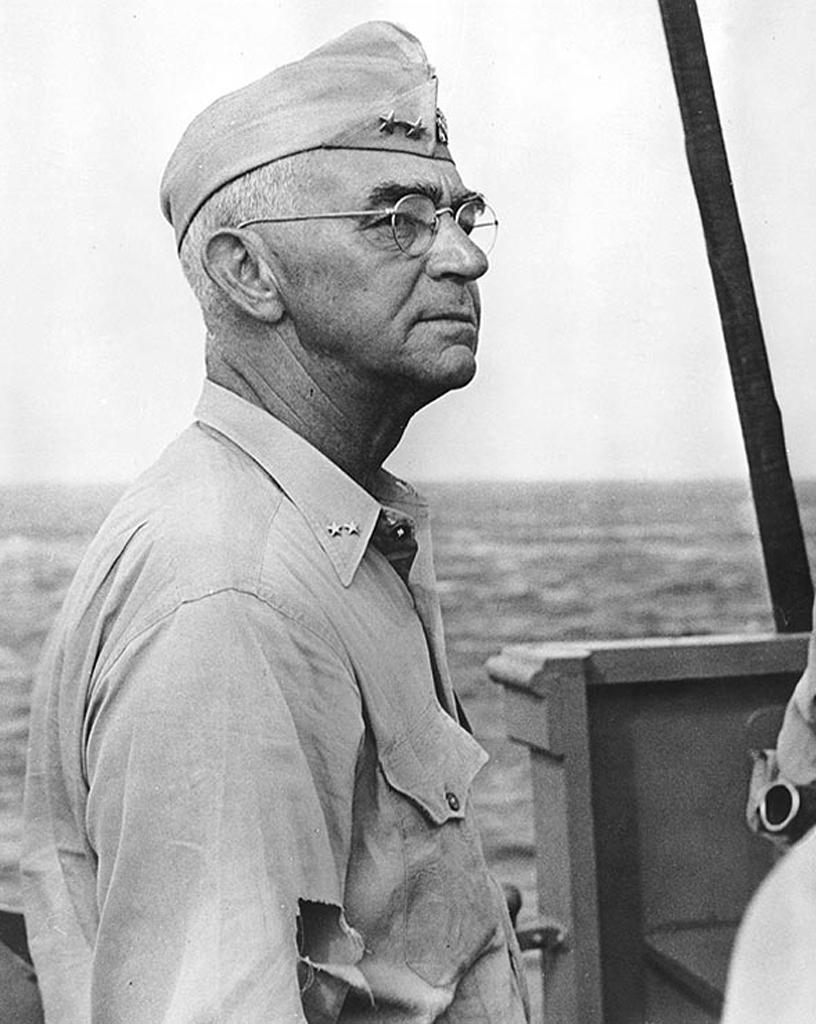
Rear Admiral Turner on board ship off Kwajalein, during the Marshalls operation, 18 February 1944.
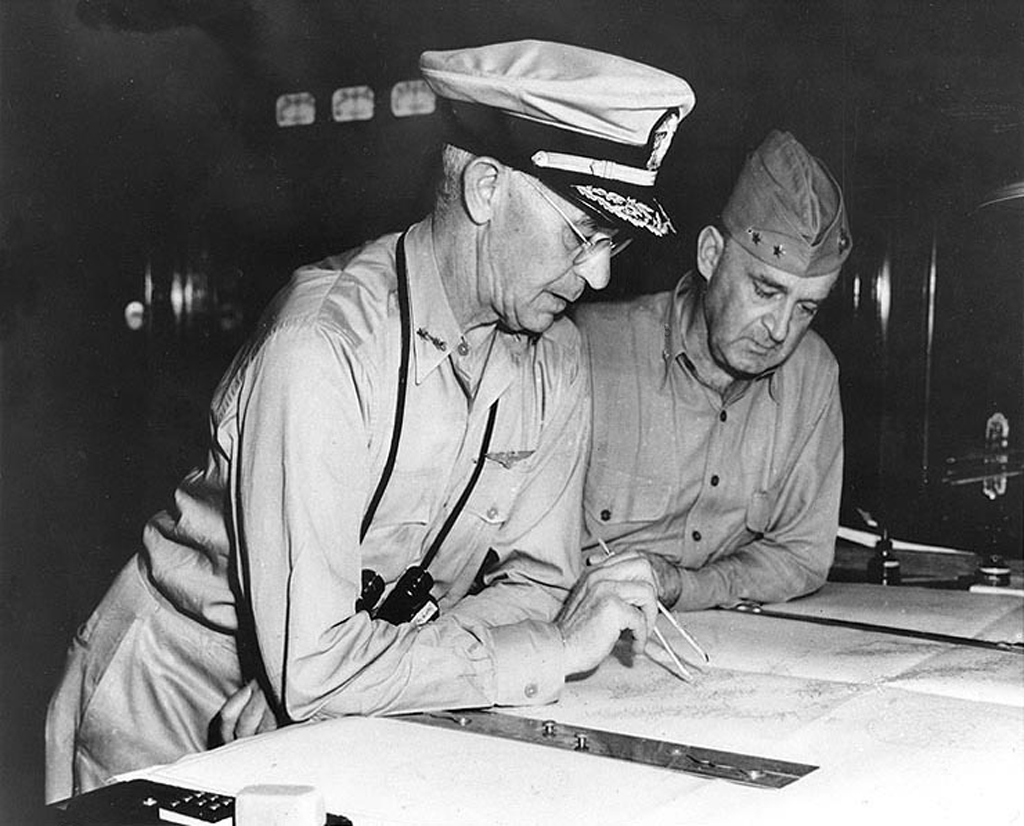
Rear Admiral Richmond Kelly Turner, USN (left), and Major General Alexander A. Vandegrift, USMC working on the flag bridge of USS McCawley (AP-10), at the time of the Guadalcanal-Tulagi operation, circa July-August 1942.
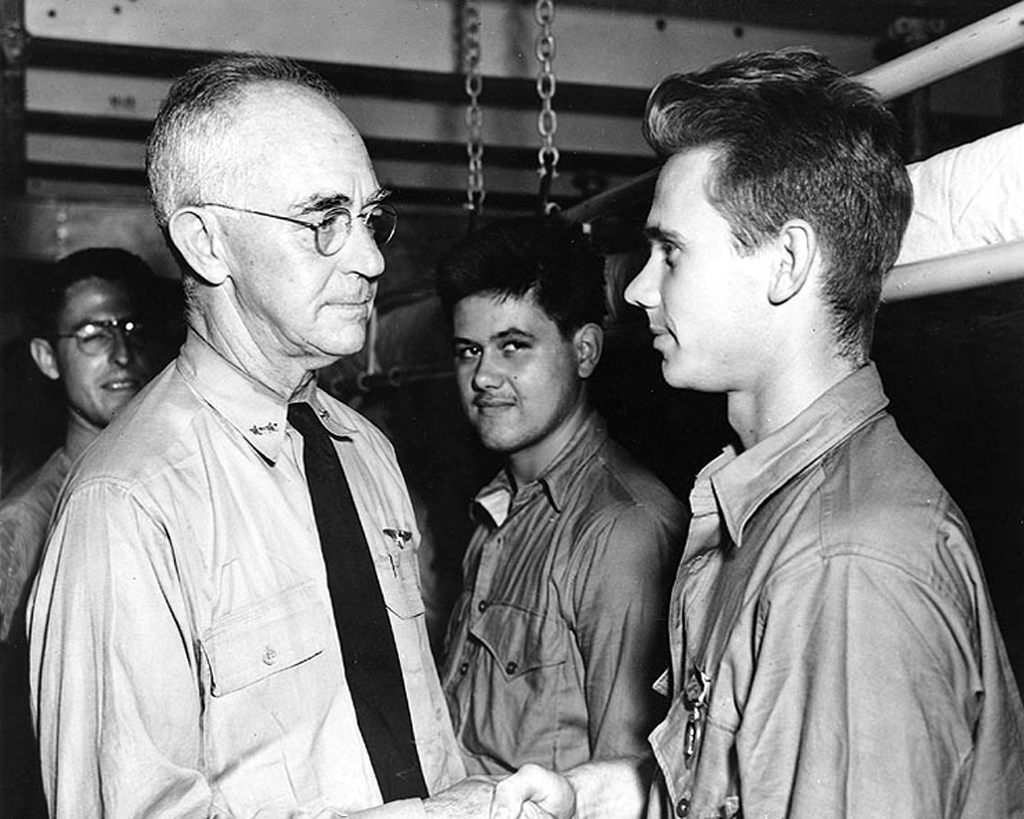
Rear Admiral Turner congratulates PFC Carl Emanuel Magnuson, USMC, after presenting him with the Purple Heart medal for wounds received in the invasion of the Gilbert Islands. The ceremony took place on board a hospital ship at Pearl Harbor, on 17 December 1943.



